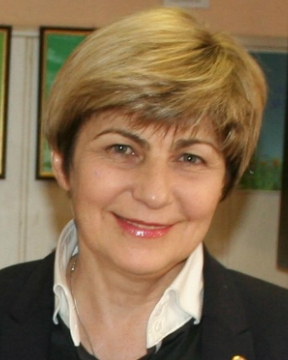Abstract:
MAX phases of Ti-Al-C system are the most examined and perspective for high temperature applications; they are light, electro conductive, having high damping and low friction abilities, etc. But despite the combination of unique properties they did not find yet wide spread application (it is difficult to synthesize single phased material, they should combine a set of properties and even the singlephased materials can have very different characteristics because of synthesis parameters) [1].
The bulk Ti2AlC, Ti3AlC2 and (Ti,Nb)3AlC2 developed by us are promising for the manufacture of interconnects of solid hydrogen fuel cells, pantograph, as damping substrates under the incisors, and others. The films with an approximate stoichiometry of Ti3.3-3.9AlC1.4-1.6 (5 I�m thick) deposited on Ti substrate using a vacuum-arc method from the hota�� pressed target (Ti2AlC (57 wt.%) +Ti3AlC2 (43 wt.%)) were extremely promising for high-temperature applications, in particular for interconnects fuel cells and as cavitation resistant coatings on turbines. After 1000 h heating at 600 oC the surface electrical conductivity of the films only slightly decreased from 0.01 to 0,01-3 Ohm while the surface of pure Ti after 250 h in the same conditions totally oxidized and lost conductivity.
Investigation of the influence of H2 for 3 - 40 h and oxidation up to 1000 h at 600 oC, as well as thermocycling in air up to 600 oC on the bending strength and mass change of Ti3AlC2, (Ti,Nb)3AlC2, Ti2AlC showed that the highest absolute value demonstrated Ti2AlC and it was the most stable in the oxide medium (seems due to presence of some oxygen in the structure - Ti2.2AlC0.9O0.17). The bending strength of the Ti3AlC2 and (Ti,Nb)3AlC2 even increased after heating in H2. The addition of Nb allowed increasing the stability of the MAX phase in H2, and in air (the oxide film was twice thinner than that on the samples without Nb after 1000 h heating at 600 oC). The high temperature X-rays showed that Ti2AlC was oxidized more intensive than Ti3AlC2 at higher temperatures (Ti2AlC was stable up to 700- 750 oC and Ti3AlC2 - up to 1050-1100 oC). The most stable at thermal cycling to 1200 oC was a high-density material based on the MAX phase Ti3AlC2, obtained by two-stage technology (synthesis in vacuum with subsequent compression by hot pressing at 30 MPa). The oxidized layer of specimens contained ~100% of Ti3AlC2 but synthesized by one-stage hot pressing at 15-30 MPa for 10-30 min was twice thicker.
The wear of Ti3AlC2 materials obtained at 30 MPa according to the one- and two-stage technologies was very low (as compare to silumin), but the wear of the copper in contact with them was rather high. Significant reduction of wear of copper was achieved when the manufacturing pressure was reduced to 15 MPa: during friction in pair with copper its wear resistance in comparison with traditionally used silumin was 40 times higher, and the wear of copper was 14 times smaller (after 6 km of the way); Besides, Ti3AlC2 demonstrated much higher arc resistance.
References:[1] T. Prikhna, O. Ostash, V. Sverdun, M. Karpets, T. Zimych, A. Ivasyshin, T. Cabioca��h, P. Chartier, S. Dub, L. Javorska, V. Podgurska, P. Figel, J. Cyboroń, V. Moshchil, V. Kovylaev, S. Ponomaryov, V. Romaka, T. Serbenyuk, A. Starostina Presence of oxygen in Ti-Al-C MAX phases-based materials and their stability in oxidizing environment at elevated temperatures // Acta Physica Polonica A. - 2018. - Vol. 133, a�� 4. - P. 789-793
|




















